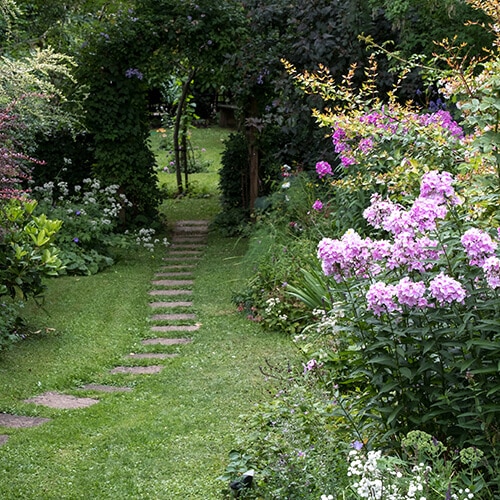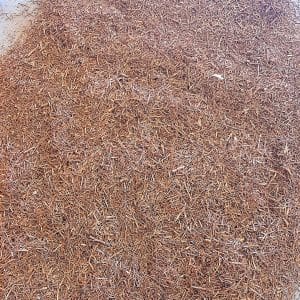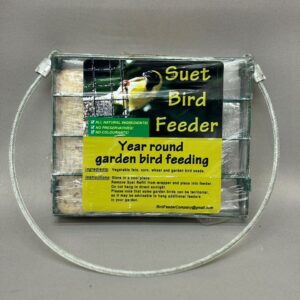Planning a beautiful garden border
Trees, hedges and borders

Flower borders as we know them today have evolved. Traditionally, the summer border consisted only of summer-flowering perennials which provided a magnificent display but left a bare and bleak bed in winter. To optimise on all the seasons and provide colour throughout the year, a mixed border consisting of shrubs, bulbs, annuals and perennials is now often preferred.
August is the time to start thinking about planning a border refresh for summer, or even creating a brand-new border. By taking into account the following factors, you’ll be better equipped to design a successful summer border:
WHAT PURPOSE MUST IT SERVE?
Ask yourself these questions to decide what function your border plays in the garden:
- Is your garden meant to be a showpiece filled with colourful seasonal blooms, or do you want it to be a low–maintenance border of permanent plants?
- Must the border fill an obvious gap in the garden, or do you want it to screen unwanted views? Tall, boundary planting works well to screen out neighbours or eyesores, whereas low plants work well when you don’t want to hide the view and want to showcase the plant itself or frame the border.
- Is it to run next to a boundary fence, or do you have a large enough garden for an island border?
POSITION AND SHAPE OF THE BORDER
The size of your garden will largely determine the maximum size of your border, but always make sure you position it where it can be seen.
Traditionally, a South African border area surrounds a central lawn, either using formal lines or informal curves. These border beds comprise colourful shrubs, perennials and seasonal colour, with smaller plants at the front and larger ones at the back. The trend towards water–wise gardens has resulted in smaller areas of lawn (or replacing lawn with decking or paving) and larger and deeper beds, often with paths leading through these areas to secret nooks and crannies. In such borders, planting tends to be more informal and natural, and the border is explored by means of a pathway.
IDENTIFY YOUR SITE
Full sun supports the widest range of colourful garden plants, so if you can, create your border where there is six or more hours of sunlight a day. There is a smaller range of plants for borders that are partially or fully shaded. Bear in mind that using plants with colourful blooms that have been grown as standards (also known as ‘balls-on-sticks’) may be possible in a shaded border, provided that the tops of the standards are in full sun.
IMPROVE THE SOIL
Before creating a new border or planting up an old border, see if your soil is ideal – i.e. a humus-rich, fine, crumbly tilth. Such soil will enable you to grow the widest variety of plants. Less perfect soil means that you will be limited to choosing plants that will grow in the prevailing conditions. Very little will grow in very poor soils (heavy clay subsoil, soil containing extensive tree roots, soil that is full of rubble) and in such cases you can improve the soil by carrying out root pruning, removing rubble and adding masses of compost.
Even the best of garden soils can do with some compost, well-rotted kraal manure and bonemeal before summer planting. While you’re at it, you may as well add water-retentive polymers, according to the instructions on the packaging.
TAKE THE CLIMATE INTO ACCOUNT
When you plant up your border, limit your plant choice to those that will tolerate the climatic conditions in your garden – fighting nature is just not worth it! Firstly, avoid choosing plants that will not survive the winter temperatures in your garden. Be aware, however, that in a garden in a frosty region you may be able to grow frost-tender plants in a border in front of a warm north-facing wall.
For borders in hot, dry regions, choose water-wise plants such as lavender, rosemary, plumbago and rock roses (Cistus cultivars). If you have a damp spot in the garden, create a pond surrounded by bog plants. If your garden is exposed to wind, protect the border with a windbreak and select plants that are wind-hardy. If salt spray enters your coastal garden, select salt-tolerant plants.
PLAN ON PAPER
By planning first on graph paper (use a scale of 1cm to represent 1m) you will avoid a jumbled or spotty effect. Use contrasting shapes and forms – spreading, bushy plants next to spiky plants. While taller plants are mostly planted at the back, some plants should be allowed to drift towards the front of the border to create additional interest and a more natural look. It makes common sense to select long-blooming plants, as well as those that flower at different seasons.
A more permanent year-round look will be created if, in addition to flowering plants, small evergreen shrubs with attractive foliage are included at intervals in the border. Make sure you take into account the mature spread of shrubs and small trees, and even perennials, so that you do not plant them too close together. Any gaps in new borders can be filled with annuals while the shrubs are growing to full size.
Tips for garden–border design:
- Leave a strip along the back of a wide traditional border so that background plants can be tended without having to step through plants in the front.
- Introduce a pleasant fragrance by planting sweet-scented plants at intervals.
- Avoid invasive plants that will swamp their neighbours.
- When choosing plants, consider how their size will relate to the size of the garden.
- In large borders, plant three or five smaller shrubs together rather than just one, and mass plant each annual or bulb variety.
- To create a sense of unity (particularly important in a small townhouse garden), match the border design style to the architectural style of the house. Some examples of garden styles are cottage, indigenous, modernist, tropical, formal, Tuscan and Provençal.
- Choose a colour scheme. It is safest to blend one shade into the next until you gain more confidence to be more daring. If you are unsure as to how to combine one colour with its neighbour, plants with grey or cream foliage can serve as a link.
You might also like
Shop online
-
- Sale!
HEALTH SENSIBLE 33 2KG, 4KG AND 15KG
- R414.99 – R2,204.99
- Select options This product has multiple variants. The options may be chosen on the product page Learn More




